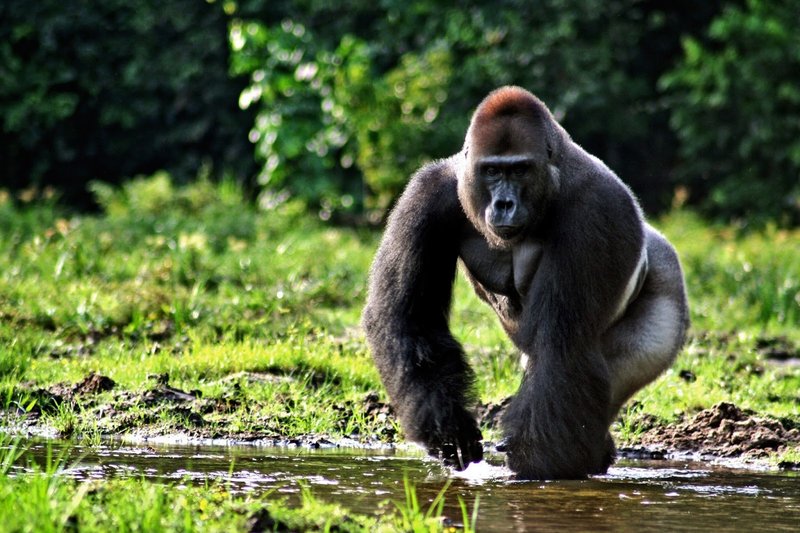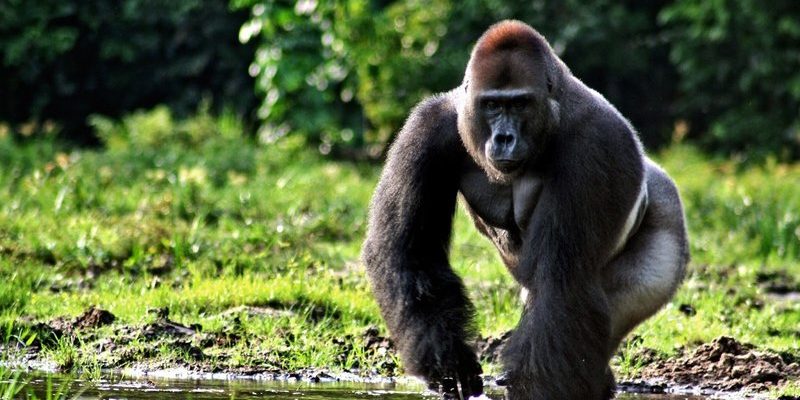
You might be wondering what to do if you unexpectedly cross paths with a gorilla. First, keep in mind that gorillas, while typically peaceful and shy, are wild animals with unpredictable behavior. Understanding their habits and how to react can keep both you and the gorilla safe. In this article, we’ll walk through essential steps to take during such an encounter, making sure you know how to handle the situation like a pro, whether you’re trekking through the forests of Central Africa or reading this at home, daydreaming about adventures.
Understanding Western Gorillas
Before we dive into what to do during an encounter, let’s get a better sense of who these animals are. Western gorillas are one of the two species of gorillas, with **Western Lowland Gorillas** being the most common. They are characterized by their stocky build, broad chests, and typically dark fur that can appear lighter on their backs. These incredible primates are primarily herbivorous, grazing on leaves, stems, and fruits in their natural habitat.
Gorillas are social animals, living in groups called troops led by a dominant male, often referred to as a silverback due to the silver hair that develops on their backs as they mature. These silverbacks are key to their troops’ safety and cohesion, using their strength and authority to protect their family. Learning about these traits helps you appreciate their behavior during an encounter.
You might find yourself wondering why it’s important to understand gorilla behavior. By recognizing how they interact, you can better anticipate their reactions, which is vital for ensuring everyone’s safety.
Stay Calm and Assess the Situation
So, you see a Western gorilla up close—it’s crucial to remain calm. Take a deep breath and assess your surroundings. Are there other people nearby? Is the gorilla alone or with a troop? Keeping your cool is essential; sudden movements or loud noises could startle the animal, leading to unpredictable reactions.
If the gorilla seems relaxed and is going about its business, you’re in a relatively safe situation. Remember that gorillas are more likely to avoid confrontation if they perceive no threat. If the animal appears agitated—perhaps it’s staring directly at you or moving toward you—then it’s time to focus on being non-threatening. Make sure your body language is open and calm: avoid direct eye contact, as this can be seen as a challenge.
Think of it this way: just like how you wouldn’t want to approach a nervous dog waving your arms in the air, you want to respect the gorilla’s space and demeanor.
Creating Distance Without Panicking
If you find yourself too close for comfort, the next step is to create distance without making a fuss. Move slowly and steadily away from the gorilla while keeping an eye on it. You might think of it like dancing with a partner—if you move too quickly or erratically, you risk stepping on toes or losing your balance.
If you’re in a group, communicate with each other without shouting. Silently signal that it’s time to back away. This gentle movement helps the gorilla see that you’re not a threat. Ideally, moving back to at least 20-30 feet is a good guideline, as it gives you both space to breathe.
Remember, the goal here isn’t to disappear, but to show that you respect the gorilla’s territory. They often respond positively to this kind of respectful distancing.
Make Yourself Small
It sounds a bit odd, doesn’t it? But making yourself appear smaller can be an effective tactic. This doesn’t mean you should crouch down or curl up into a ball, but rather keep your posture neutral and relaxed. Try to blend in with your surroundings.
Avoid waving your arms or making exaggerated gestures. Instead, let your body relax and avoid making any sudden movements. If you’re wearing bright clothing, consider turning to face away from the gorilla, which can minimize your perceived size. Think of it as becoming part of the scenery—calm and unnoticeable.
Imagine you’re a part of the jungle itself—quiet, still, and aware. This subtle tactic can help communicate that you mean them no harm.
Respect Their Space: Do Not Approach
One of the biggest mistakes people make is trying to get closer for that perfect photo or experience. Let me explain why this approach is not advisable. **Western gorillas are wild animals, and invading their personal space can be seen as a threat.** If they feel cornered, they may react aggressively to defend themselves or their troop.
Instead of trying to approach, stay where you are, and allow the gorilla to decide if it wants to come closer. This might feel counterintuitive, especially if you’re an adventurous spirit longing for a closer look, but respecting their space is crucial.
Think of it like this: if someone barged into your personal bubble, how would you feel? Uncomfortable, right? Gorillas can feel the same way. By allowing them to choose how to interact, you make it a safer environment for everyone involved.
Communicate Silently and Calmly
As you navigate this encounter, communication becomes key—but we’re not talking about words here. Use **non-verbal cues** to convey calmness. This might mean using slow, gentle movements and maintaining a soft demeanor.
If you find yourself in a group, it’s essential to stay connected without making noise. Use hand signals or facial expressions to let others know how to proceed. For example, a subtle wave of the hand can indicate to someone else to step back or remain quiet.
As you’re doing this, keep an eye on the gorilla’s body language. If it shows signs of stress, like puffing out its chest or displaying teeth, it’s time to reinforce your calm demeanor. **Remember**, the more relaxed you are, the more likely the gorilla is to remain calm too.
Report Your Encounter
Once the encounter has passed, it’s important to report your sighting. Many national parks and wildlife organizations value this information for research and conservation efforts. By providing details about your experience, you can help authorities monitor gorilla populations and contribute to their safety.
Consider sharing specific information such as the location, the behavior of the gorilla, and any actions taken during the encounter. Think of it as giving back; your encounter can help preserve their habitat and ensure future generations have the chance to see these amazing creatures.
You might also find it enriching to share your story with fellow trekkers or on social media. Not only does it raise awareness, but it also fosters appreciation for wildlife and the delicate balance of nature.
Encountering a Western gorilla in the wild is like stumbling upon a hidden treasure of the jungle. It’s thrilling, unforgettable, and a reminder of the wild beauty that still exists on our planet. But with that excitement comes responsibility. By knowing what to do in such a situation—staying calm, respecting their space, and communicating effectively—you can ensure that both you and the gorilla have a safe, respectful experience.
Remember, these magnificent beings are part of our world’s rich tapestry of life. By acting wisely and with care, we protect not only ourselves but also the precious wildlife that deserves our respect. So, if you ever find yourself standing face-to-face with a Western gorilla, take a deep breath, follow these steps, and enjoy the moment for what it truly is—a rare glimpse into the wild.

